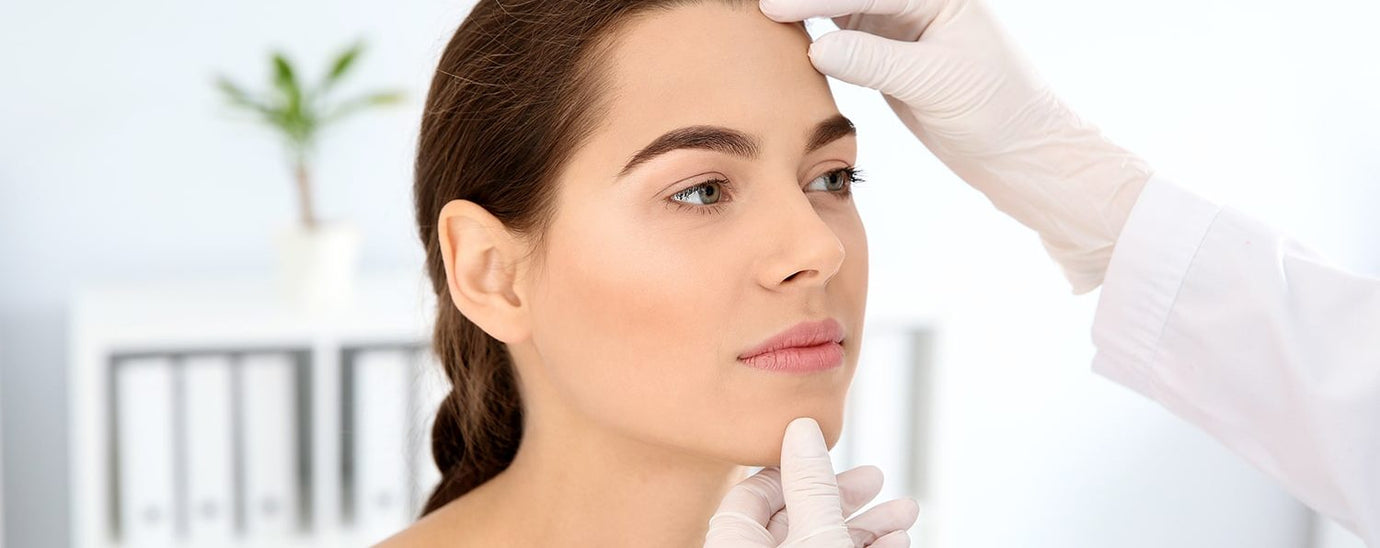Understanding Melanoma: The Importance of Early Detection and Prevention

May is Skin Cancer Awareness Month, a time to raise awareness about the dangers of skin cancer and the importance of prevention and early detection. Skin cancer is the most common type of cancer in the United States, and melanoma, a type of skin cancer, can be more aggressive and potentially life-threatening if not detected and treated early. Melanoma can develop quickly and spread to other parts of the body, which is why it's essential to understand the risks, know how to protect your skin, and recognize the warning signs of skin cancer.
Melanoma is a type of skin cancer that occurs when the melanocytes, which are responsible for producing skin pigment, become abnormal and begin to grow uncontrollably. These abnormal cells can form a tumor and potentially spread to other parts of the body if left untreated. It's important to monitor your skin for any changes, especially in moles. Most moles are harmless and look like small, brown spots on the skin. However, melanomas can often be distinguished from regular moles by their size, shape, and color. They may have uneven borders, be asymmetrical, and have a mixture of different colors. Some may also itch, bleed, or be painful. If you notice any changes in the appearance of a mole or the appearance of a new spot on your skin, it's important to see a dermatologist for an evaluation. Early detection and treatment of melanoma can greatly improve your chances of a successful outcome.
Signs and Symptoms of Melanoma
The most common sign of melanoma is a change in an existing mole or the appearance of a new, unusual-looking mole. When checking your skin for melanoma, use the "ABCDE" method:
A – Asymmetry: One half of the mole is different from the other half. The mole is not symmetrical.
B – Border: The edges of the mole are irregular or blurred. The mole has jagged or poorly defined edges.
C – Color: The mole has multiple colors or an unusual color. The mole may have shades of brown, black, white, red, or blue.
D – Diameter: The mole is larger than a pencil eraser (about 6mm). The mole is growing in size.
E – Evolving: The mole is changing in size, shape, or color. The mole may be evolving in terms of its shape, texture, or elevation.
Remember that melanoma can develop on any part of the body, even in areas that are not exposed to the sun.
Prevention of Melanoma
Preventing melanoma is all about protecting your skin from harmful UV rays. These rays are produced by the sun and can cause skin damage, leading to skin cancer. UVA and UVB are two types of UV rays that can damage the skin in different ways. UVA rays are known to penetrate the skin more deeply and are responsible for skin aging, wrinkles, and skin damage. On the other hand, UVB rays are more superficial and are responsible for sunburns and skin cancer.
The most effective way to prevent melanoma is to use a broad-spectrum sunscreen with an SPF of 30 or higher. A broad-spectrum sunscreen protects against both UVA and UVB rays and helps reduce the risk of skin cancer. It's essential to apply sunscreen generously on all exposed skin and to reapply it every two hours or immediately after swimming or sweating. Seeking shade during peak sun hours and wearing protective clothing, such as a hat, sunglasses, and long-sleeved shirts, can also help protect your skin from harmful UV rays.
Avoiding tanning beds is also a crucial step in preventing melanoma, as they emit harmful UV rays that can damage the skin and increase the risk of skin cancer. It's also important to get regular skin checks from a dermatologist, especially if you have a family history of skin cancer or have moles or unusual spots on your skin. Dermatologists can identify and treat skin cancer at an early stage, which can significantly increase the chances of successful treatment.
Taking proactive steps to protect your skin from harmful UV rays is crucial in preventing melanoma. Wearing sunscreen, seeking shade, wearing protective clothing, avoiding tanning beds, and getting regular skin checks are some of the most effective ways to reduce your risk of developing melanoma.
Difference between a mole or melanoma
It can be difficult to distinguish between a regular mole and a melanoma, which is why it's important to monitor your skin for any changes. Generally, moles are small, round or oval, and have a smooth surface. They may be flat or slightly raised, and they usually have a uniform color. Melanomas, on the other hand, can vary in size, shape, and color. They may have an irregular shape, uneven borders, and different shades of color. In some cases, they may itch, bleed, or become painful. If you notice any changes in an existing mole or the appearance of a new mole that looks unusual, it's important to see a dermatologist as soon as possible for an evaluation. Early detection and treatment of melanoma can improve your chances of a successful outcome.
During Skin Cancer Awareness Month, it's important to remember the key takeaways from this discussion. Melanoma is a serious form of skin cancer that can be deadly if not detected and treated early. By taking simple steps such as wearing sunscreen, seeking shade, and getting regular skin checks, we can significantly reduce our risk of developing skin cancer and promote healthy skin for the long term.
Moreover, it's crucial to raise awareness about skin cancer and educate others about the importance of prioritizing our skin health. As individuals, we can do our part by taking care of our own skin and encouraging our loved ones to do the same. Together, we can spread the message about the importance of skin health and make a positive impact on the lives of those around us.
Let's continue to prioritize our skin health beyond Skin Cancer Awareness Month and make it a lifelong habit to take care of our bodies. By staying informed and proactive about our skin health, we can live long, healthy lives and inspire others to do the same.




